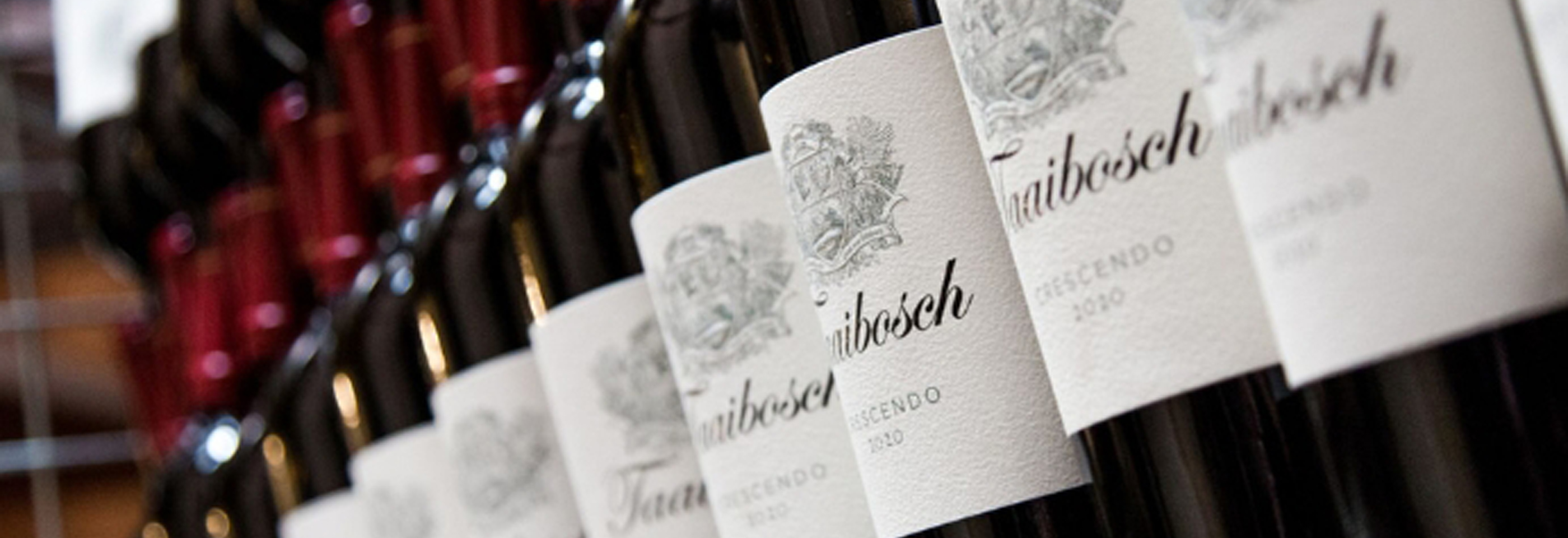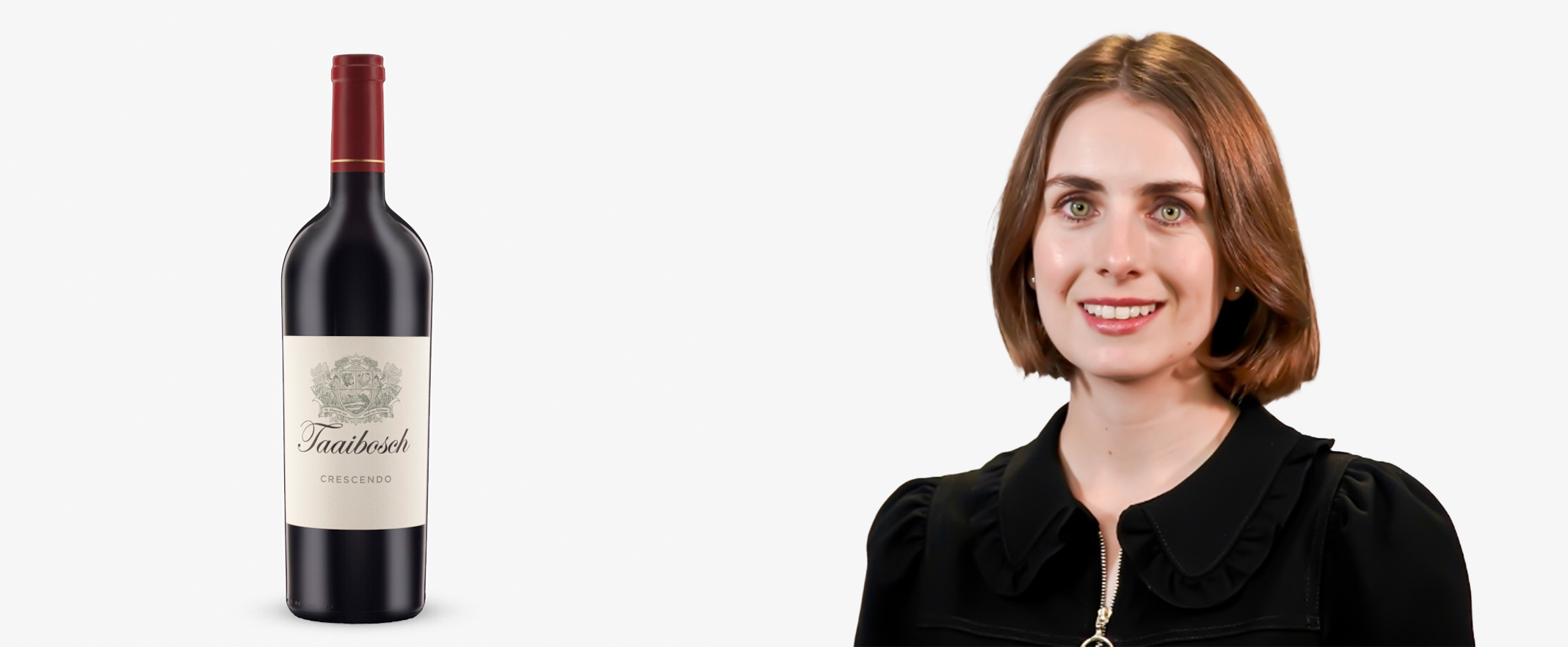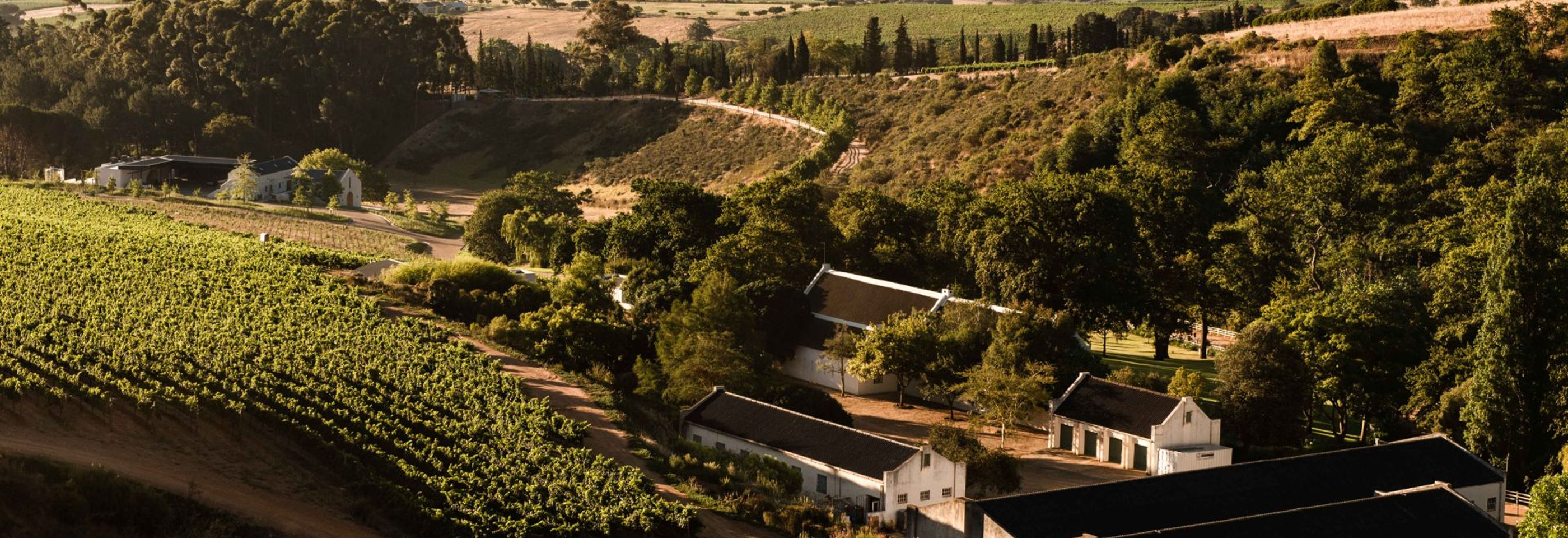
What We're Drinking: Taaibosch Crescendo 2019
9 July 2025
Our resident Broker Josephine Davies gives us insight into what she's drinking right now.
Josephine Davies

“What’s your favourite wine?” It’s a question that I’m frequently asked. The answer varies as my tastes and whims are ever changing; I can never quite pin it down to just one wine. I mainly drink white Burgundy and Right Bank Bordeaux but the joy of working in the wine trade is that you’re always trying new things and I’ve been steadily broadening my horizons further afield…
My new discovery is Crescendo from Taaibosch, a Bordeaux blend hailing from South Africa. Neal Martin muses: ‘think what Figeac might taste like if it suddenly woke up and found itself in Stellenbosch’.
The 2019 is only the second vintage ever produced by the estate and is a blend of Cabernet Franc (65%), Merlot and Cabernet Sauvignon. It has a pretty nose of crushed violets and shows lovely black fruit with a hint of five spice. It’s plush and silky and altogether a charming wine. I’ve been decanting an hour in advance of serving to really allow the wine to sing but it’s equally approachable if you just pop the cork and pour.
With bottles priced at £30.79 on the table, it’s certainly a wine worth following.

The fantastic 2019 shows that there was no beginner’s luck with the 2018. A contrasting, cooler, later vintage, the Crescendo 2019 has a cool, lifted, stony red and black fruited bouquet with a fine salinity, trembling freshness and distinguished tannic structure which will require a few years longer in bottle to show at its best. Fermentation takes place in stainless steel and cement, followed by a long gentle cuvaison of up to 60 days, before it is racked in to cement for malolactic fermentation. The wines are blended and moved to French barrique, a third new, where they age for 14 months. After that it is re-assembled entirely and split 70% in to foudré and 30% in to cement for another year in order to “refine the mouthfeel and heighten the sense of perfume. We get all the benefit of foudré aging without adding any extra wood tannin or taste.” It is then held back in bottle for a year prior to release. There are no shortcuts here and everything is done with an eye for quality. In our view, Crescendo is South Africa’s best Bordeaux-blend at the moment and certainly a wine worth following.
Taaibosch Crescendo, 2019 at £30.79 per bottle UK including taxes.

For those in the know, Cordoba Crescendo was South Africa’s original cult wine in the post-Apartheid era. Long before Columella, in the mid-1990s, Cordoba was one of the most revered wines in the Cape, and its maiden vintage 1995 made a name for Chris Keet, cellarmaster at the time. A Cabernet Franc-led Bordeaux blend from the Heldeberg Ward of Stellenbosch, elevation here ranges from 230-350m, just 7km from False Bay. That combination of altitude and proximity to the ocean allows for a natural cooling system, perfect for the later ripening Bordeaux varieties. Sadly, by the early 2000s the then-owners lost interest in the farm and Keet moved on to pastures new. The last vintage bottled under the Cordoba brand was 2003, although the wine was bottled for a few more years and sold off unlabelled at ridiculously low prices. From 2006, the vineyards were maintained but only as a source of grapes for other producers in the area. All signs pointed to the demise of a former icon.
Happily though, new owners took over in 2017 and set about building a new winery surrounded by the original estate vineyards. It is now called Taaibosch, named after the indigenous fynbos species that grows in abundance on the estate. Located on the steep slopes of the Heldeberg it enjoys 360-degree orientation and views over Cape Town and Table Mountain. Schalk-Willam Joubert has been installed as the new cellarmaster and, in keeping with the legacy of the property, plans to continue the focus on one Cabernet Franc based red, which has also been christened Crescendo. In that regard, it is a direct descendant of the original Cordoba bottlings, except it now benefits from the experience of two decades’ worth of a revived and dramatically improved wine culture in South Africa.


